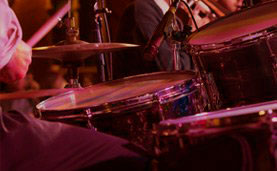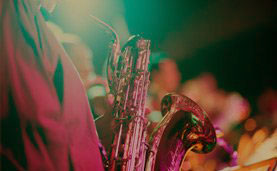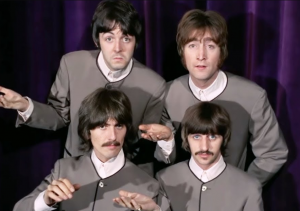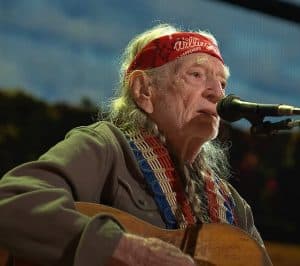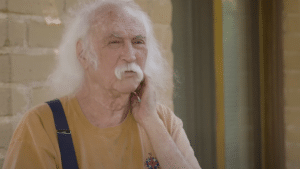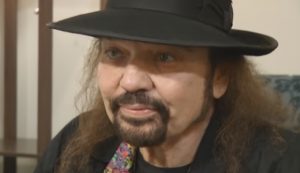The 5 Drum Solos That Defined Rock n’ Roll
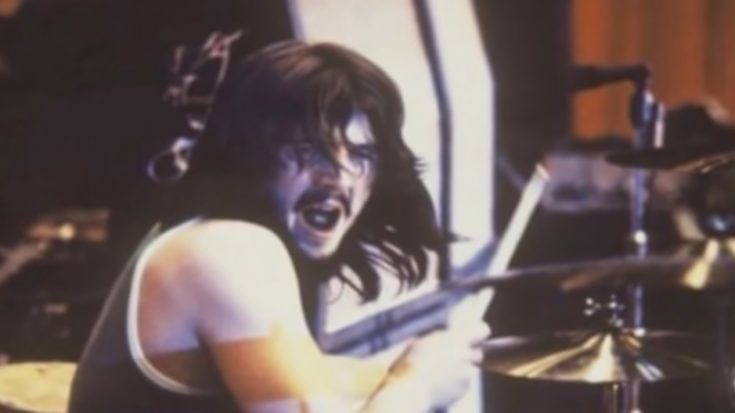
John Bonham - Bent Christiansen / Youtube
Drums are the heartbeat of rock and roll, providing the rhythmic foundation that keeps the music alive and kicking. In the realm of live performances, drum solos stand as electrifying moments that showcase the raw power and skill of the drummer.
The following drum solos not only showcased the technical prowess of the drummers but also elevated the role of percussion in rock and roll. They demonstrated that drum solos were not mere interludes; they were moments of intense musical expression, capable of shaping the sonic landscape of a song and leaving an enduring impact on audiences.
These solos have become part of rock and roll folklore, influencing generations of drummers and igniting the rhythmic pulse that drives the genre forward.
“O Baterista” by Rush (Neil Peart)
It’s not a surprise that Neil Peart is here. He will always turn up in lists of best drum solos in rock history, and not just with his sprawling instrumental “O Baterista”. You will find Peart ranking in these lists with “YYZ”, “The Rhythm Method” or Tom Sawyer, songs with their own mesmerizing drum solos.
Peart’s reputation as one of the greatest drummers in history, if not the greatest, finds ample support in the aforementioned extraordinary drum solos, but his spotlight-stealing “O Baterista” solo served as a prime example of his virtuosity.
The title of the instrumental also checks out, as “O Baterista” means “The Drummer” in Portuguese and Spanish. The live performance was recorded at Maracanã Stadium in Rio de Janeiro on the final night of the Vapor Trails Tour and was released as part of Rush’s three-disc live album Rush in Rio in 2003.
Throughout this solo, Peart fluidly navigates different musical styles and rhythms, showcasing his versatility and brilliance. He effortlessly transitions from a 3/4 waltz on the toms to a Latin-infused performance on his electric kit, culminating in a spirited jazz tribute to his idols, Buddy Rich and Gene Krupa, played on both the electric kit and auxiliary percussion.
Although some critics dismiss Peart’s solos as overly choreographed and rehearsed, there’s no denying that these pieces of art have fundamentally altered the art of crafting drum solos. Peart’s genius, regardless of the opinions of critics, helped popularize prog rock to a wider audience, influencing a generation of rock drummers.
It’s no wonder “O Baterista” was nominated for a Grammy for Best Instrumental in 2005, though it ultimately lost to Brian Wilson’s “Mrs. O’Leary’s Cow”.
“Toad” by Cream (Ginger Baker)
Of course, the red-haired drum monster is here. He’s rock’s first superstar drummer after all. Ginger Baker stands as another drummer who combines intent with extraordinary skills that transcend conventional boundaries.
Drum solos in rock weren’t even a thing before Baker brought that idea to Cream, arguably the rock’s first supergroup. The feisty drummer’s jazz influence was a stubborn influence that helped him craft drum solos that still influence rock drummers to this day.
Baker’s best solo is the mesmerizing live performance in “Toad” showcased during Cream’s 1968 performance at the Royal Albert Hall in the UK. This masterpiece lives rent-free in every aspiring rock drummer’s head, inspiring endless attempts at emulating the performance.
This solo is characterized by its frenetic fills and rapid execution, yet remarkably, it maintains a profoundly musical composition. This remarkable musicality owes much to the fact that, while Cream primarily embraced blues and rock, Baker’s solo retains an unmistakable jazz foundation.
His playing is infused with melody, and his ability to weave distinct patterns with each limb underscores the virtuosity that defined Baker. Simultaneously, the solo serves as a testament to his capacity to deliver a resounding rock impact.
Within the performance, Baker employs a sequence of drum beats that build up, transform, and then recede, giving way to new patterns. The combination of the ride cymbal, hi-hat, tom-toms, and double-bass drums interweaves rhythms that complement each other seamlessly, shaping the composition’s rhythmic tapestry.
Although the album’s track is a concise five-minute instrumental, centered around the drum solo, the live rendition extends over 13 minutes, enriched by the live experience. It was as if Baker owned “Toad” with Eric Clapton’s guitar and Jack Bruce’s bass serving as decorations with little to no presence.
Of course, Baker had to go out with a resounding bang since the Royal Albert Hall performance was Cream’s Farewell Concert. He recreated the magical performance in 2005 during Cream’s Reunion. The then white-haired drum madman, who somehow survived more than five decades of drug abuse and tumultuous marriages on three continents, did not shy away from once again stealing his own spotlight for “Toad”.
“Moby Dick” by Led Zeppelin (John Bonham)
Another permanent member of best of rock drumming lists is the hammer of the rock gods, John Bonham of the legendary hard rock icon Led Zeppelin. Bonham, also affectionately known by his nickname ‘Bonzo’, is celebrated as being one of the greatest rock drummers of all time, and has remained a constant source of inspiration to generations of drummers since his reign behind the kit with his band.
When discussions arise about rock drum solos, Bonham’s “Moby Dick” promptly comes to mind. The most renowned rendition is the captivating 12-minute performance from a 1970 Royal Albert Hall concert, where Bonham’s brilliance shines through his rapid rhythmic patterns, revealing his prowess in shaping an entire musical narrative.
The instrumental starts with the customary weaving of instruments, only to come to a halt at the one-minute mark. The drums then burst forth with an inviting tom rhythm that instantly enthralls. Progressing into rapid triplets executed across the toms, snare, and bass drum, the solo evolves into an intricate showcase of Bonham’s skill.
One finds it impossible not to remain entranced. Typically, a casual music enthusiast might skip over a solo, considering it detached from the song. However, in this instance, the solo unfolds as an unstoppable force that demands undivided attention. It persists, relentlessly surging forward, infusing life and fervor.
Ultimately, all components reconvene—the guitar lick and the bass. “Moby Dick” is destined to forever reside as Bonzo’s magnum opus in drumming.
While the studio version of the solo spans around two minutes, the band frequently extended it during live concerts, affording Bonham approximately twenty minutes to weave his enchanting tapestry.
For years, Bonzo slyly misled fans, fostering the illusion of dual bass drums when, in truth, his approach was characterized by sheer force and volume. However, this doesn’t diminish his technical prowess, given his classical musical training.
His exceptional technique and resounding open tone elevated Led Zeppelin’s compositions to soaring heights. He exemplified the essence of sincere, emotive rock drumming that emanates from the soul.
“Sing, Sing, Sing” by Benny Goodman Orchestra (Gene Krupa)
Neil Peart himself declared that jazz icon Gene Krupa was the first rock drummer. And it makes sense, Krupa was an influential drummer who defined the standard modern drumset. He was credited as a “revolutionary” who generated a legacy that continued to reverberate through the era of rock.
Peart was not only the rock drumming icon Krupa influenced. John Bonham of Led Zeppelin and Keith Moon of The Who were also adherents of Krupa’s drumming style, ultimately integrating it into their own renowned drum techniques.
Krupa’s contributions gained him the distinction of being the first drummer inducted into the Modern Drummer Hall of Fame in 1978. One of his most defining moments was on Benny Goodman’s 1937 recording of “Sing, Sing, Sing”, which helped the role of a drummer step forward from an accompanist to an important mouthpiece in the band.
While his own song “Leave Us Leap” can also take its own spotlight in this list, it was his work on “Sing, Sing, Sing” was more influential and celebrated, not just for being one of the most recognizable drum tracks, but also for Krupa’s drumming prowess during the era of jazz.
During that era, Krupa’s revolutionary utilization of the drum set as a standalone instrument marked a pioneering achievement that left a profound impact on numerous future drummers.
This solo subsequently evolved into a revered jazz standard, with countless artists offering their interpretations over the years. Its enduring popularity persists, making it a timeless musical gem and frequently cited as a standout moment in Krupa’s illustrious career.
Throughout the composition, there are intervals where the drums interject for solos, gradually building momentum towards the subsequent segment. What sets these solos apart is their uniqueness; none of these breaks mirror each other. These sections are prominently present in the introduction, at the 3:05 mark, and scattered throughout.
The tom grooves showcased possess a rhythmic vitality that commands attention. The incorporation of grace notes and accents imbues it with more than just a rhythmic foundation; it evolves into a melodic thread in its own right.
Whether you’re a drummer or not, you’ll find yourself humming along, which is precisely what has propelled its popularity and renown. Much like captivating vocal hooks resonate with non-musicians, this drum sequence holds a universal appeal that can be grasped and appreciated by all.
Concert for the Americas solo by Buddy Rich
Much like Krupa, Buddy Rich is one of the drummers who have directly or indirectly influenced all the other drummers on this list (or on any other best drummer lists). He’s a drum deity on his own and has entertained generations of listeners with his epic drum solos.
While his “West Side Story Medley” can compete for the spot of his most influential work, his drum solo in the Concert for the Americas in 1982 would always easily edge that out. His legendary performance was only made more amazing by the fact that Rich joined the ensemble of artists at the ripe age of 65.
His age failed to dull the brilliance of his skill, soul, and rhythmic finesse, all of which radiate brilliantly throughout his performance.
This standout solo undeniably stands as his pinnacle achievement, as it embodies groundbreaking elements in every aspect. Numerous rock drummers, including Steve Gadd, Steve Smith, and Neil Peart—all esteemed individuals behind the kit—have drawn inspiration from the virtuoso’s fervor and technique.
Of unparalleled significance within the solo is Rich’s hi-hat work. His technique involves grasping the hi-hat with his left hand, anchoring his thumb on the upper cymbal, while his remaining four fingers deftly maneuver the left stick beneath the hi-hat, simultaneously muting the cymbal. This remarkable display of artistry is the standout feature, showcasing unparalleled brilliance.
The execution of techniques like the cymbal maneuver, particularly in a live setting, represents an immense challenge. Observing Buddy Rich seamlessly wielding these skills not only underscores his greatness but also highlights his remarkable ability, even at an advanced age.


